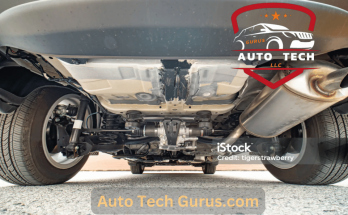Absolutely, let’s jump right into the exciting world of all-wheel drive (AWD) drifting! Have you ever wondered whether it is possible to drift an AWD vehicle? Many car enthusiasts have discussed this subject; today, we will examine its specifics. Can AWD cars really drift? Absolutely; in fact, it can be an exhilarating experience!
Key Takeaways
Drifting Fundamentals
Drifting is a driving technique involving intentional oversteering to navigate corners while maintaining control, requiring precision and a deep understanding of vehicle dynamics.
AWD Drifting Dynamics
AWD drifting necessitates a different approach compared to RWD vehicles, involving a unique combination of throttle control, weight transfer, and steering input to induce and maintain the drift.
Power Distribution in AWD Systems
Understanding the torque split and the role of the center differential or electronic control unit (ECU) is crucial for mastering AWD drifting, as it influences power distribution and the car’s drift potential.
Vehicle Familiarization and Safety
A thorough understanding of the specific AWD configuration of the vehicle is essential to maximize the AWD drifting experience. Safe practice in controlled environments is crucial for honing AWD drifting skills without compromising safety.
Future of AWD Drifting
AWD drifting represents a fusion of technological advancement and driving skill, challenging traditional perceptions of drifting and opening new avenues for automotive enthusiasts to explore.
Understanding Drifting: The Art of Controlled Oversteer
Once again, let’s define drifting. Drifting is a driving technique in which an intentional oversteer causes loss of traction for all or some tyres while remaining under control through corners. It requires precision, control, and an extensive knowledge of vehicle dynamics. Drifting is typically associated with rear-wheel-drive (RWD) cars but is now an increasingly popular trend among AWD vehicles as well.
Can you drift with AWD ?
Challenging Traditions and Embracing Innovation
When it comes to AWD drifting, one of the primary considerations is power distribution to each wheel. Although AWD systems differ between car models, their basic premise remains the same: sending power from all four wheels gives better traction and stability compared to RWD vehicles, which do not. AWD cars do have the potential for drifting, however; it just requires different strategies than with RWD cars.
Decoding AWD Drifting: The Power Distribution Dilemma
One key aspect of AWD drifting is understanding your AWD system’s torque split. This refers to how much power is sent from the front and rear wheels, respectively. Some AWD systems offer default front/rear torque distribution ratios; however, others allow drivers to dynamically alter power distribution based on driving conditions for an uninterrupted transfer of power, enhancing the AWD drifting experience.
Technique Matters: Mastering AWD Drifting Dynamics
An AWD car requires a different approach when transitioning from regular driving to initiating and maintaining a drift than RWD vehicles do. AWD drifting involves using throttle control, weight transfer and steering input in combination to initiate and sustain drift. Finding the ideal balance between power and steering input to achieve desired drift angles without losing control is vitally important to success in AWD drifting.
The Role of Technology: Center Differential and AWD Drifting
Another integral aspect of AWD drifting lies with the role of the center differential or electronic control unit (ECU) in modern AWD systems. This electronic unit distributes power between front and rear axles and may even be adjusted to bias power toward rear wheels to increase drift potential; such control over power distribution allows for precise yet controlled AWD drifting maneuvers.
Know Your Ride: Maximizing AWD Drifting Potential
Note that AWD drifting requires an in-depth knowledge of your vehicle’s capabilities and limitations. Different AWD systems offer various degrees of adjustability; getting the best experience out of drifting your AWD system is key! Furthermore, practicing in a controlled environment like a track or parking lot allows for the safe development of AWD drifting skills without jeopardising safety.
Safe Practice, Thrilling Experience: AWD Drifting Preparations
As previously discussed, AWD drifting is definitely possible and an exhilarating experience for automotive enthusiasts. By mastering the art of AWD drifting with proper technique, understanding your AWD system, and practicing, you can master AWD drifting to unlock all its potential and unlock its full potential in your AWD car. If you are ever behind the wheel of an AWD car, do not hesitate to dive headfirst into this thrilling world and experience the thrill of pushing the limits of traction and control! As technology advances and the world of AWD drifting grows, drivers will have more opportunities to learn about controlled oversteer!
Conclusion
AWD drifting represents a fusion of technological advancement and driving skill, challenging traditional perceptions of drifting. As automotive technology continues to evolve, the allure of AWD drifting is poised to captivate enthusiasts with its unique dynamics and the need for a deep understanding of power distribution.
Embracing the nuances of AWD drifting opens up new avenues for automotive enthusiasts to explore, pushing the boundaries of control and precision on the road and the track. As with any driving technique, safety, practice, and a thorough understanding of the vehicle’s capabilities are paramount in pursuing the exhilarating art of AWD drifting.
FAQ’s About ” CAN You Drift AWD?”
Can all AWD cars drift?
AWD cars have the potential to drift, but it requires a different approach compared to RWD vehicles. The capability to drift depends on the specific AWD system and the driver’s skill in controlling the power distribution.
What is torque split in AWD systems?
Torque split refers to how much power is sent to the front and rear wheels in an AWD system. It’s a crucial factor in AWD drifting as it influences the car’s behavior during a drift.
How does AWD drifting differ from RWD drifting?
AWD drifting requires a different technique involving throttle control, weight transfer, and steering input. Unlike RWD drifting, AWD drifting involves managing power distribution to all four wheels.
Can AWD drifting be performed safely?
With proper knowledge of the vehicle’s AWD system, practice in a safe environment, and adherence to safety guidelines, AWD drifting can be performed safely.
What role does the center differential play in AWD drifting?
The center differential or electronic control unit (ECU) in modern AWD systems is responsible for distributing power between the front and rear axles, impacting the car’s ability to drift.



